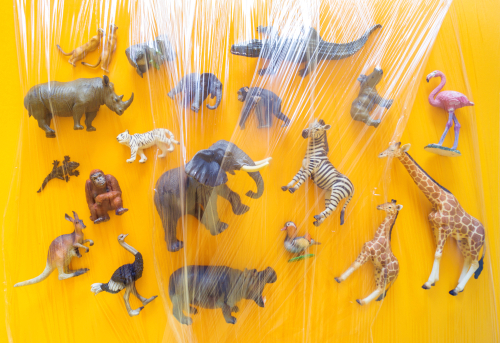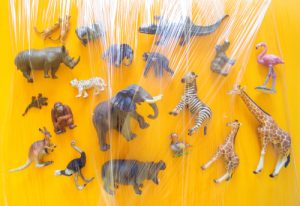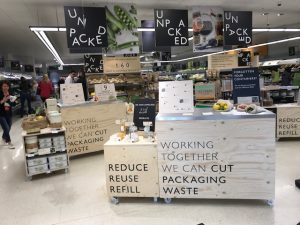Plastic Free Toy Packaging

REDUCE. RECYCLE. REUSE.
How can industries and economies reconcile the need to reduce their environmental impact with the compulsion to grow sales, all whilst meeting the expectations of stakeholders? It’s a dilemma which no industries, including toys, can shy away from.
No challenge could be bigger than addressing the scale of plastic waste polluting land and water. 8 billion kilos of plastic end up in our oceans, every year, and much of it ultimately ends up in the food chain, from particles found in fish to the salt on the dinner table.
 Big challenges inspire the most innovative thinking, obliged as we are to think differently beyond the functional aspects of our products, from how they are packaged to what happens to them when they reach the end of their useful existence.
Big challenges inspire the most innovative thinking, obliged as we are to think differently beyond the functional aspects of our products, from how they are packaged to what happens to them when they reach the end of their useful existence.
Some innovators, toy developers like Green Toys Inc, are already re-purposing household plastic waste to produce toys. Of the 3-pronged approach – REDUCE, RECYCLE, REUSE – RECYCLE and REUSE are important measures, but the most powerful of them all is REDUCE.
The key to meeting the challenge overall begins with a reduction in production of “virgin” synthetic plastic, and the toy industry specifically has an important role to play.
Clear plastic is considered by many to be unrivalled in its ability to give products centre stage on shelf, capturing and holding shoppers’ and kids’ attention in store, whilst keeping their contents clean and secure. A well-designed, well placed window pack with inner tray can harness store lighting to place the spotlight on its product inside. Blister packs create a sense of 3D product visibility and add vibrancy to strong colours under store lighting too. Nevertheless, synthetic plastic is neither biodegradable nor wholly recyclable. Bioplastic may not be the perfect solution given that opinions amongst environmental experts are divided about the benefits versus the harm of producing bioplastic to replace the synthetic version. However, crucially, bioplastic is biodegradable, so as an alternative, it may offer the best step forward available to us… for now.
For those toy lines sold in bricks and mortar stores which are not currently using plastic in their packaging, resist the urge to adopt bioplastic until the science is better proven, and look to other means of increasing impact on shelf. Closed packaging provides greater scope for storytelling than open packaging. Good quality photography and illustration bring the “action” and backdrop of play to life (e.g. an imaginary or real-world landscape, a place in the home). Add a QOR code on the front of pack or on POP material so that kids and adults alike can view the pack contents with all the benefits of clear open packaging in digital (mobile), making interaction even more engaging whilst standing in front of the fixture. Closed packs are not dependent on shelf positioning to take full advantage of store lighting either and, crucially, without the plastic, a higher proportion of the packaging materials can be biodegradable.
As the volume and frequency of accompanied shops in store has declined, fewer kids are exposed to products packaged in all their shelf-ready glory. Our research shows that fewer kids cite store visits as an influence in their request for toys, down -35% since 2011, and a trend that is set to continue. Whilst plastic in packaging might be deemed necessary to create impact on shelf in bricks and mortar stores, its importance is clearly on the wane and packaging serves little or no purpose in selling product off the digital page.
The growth in online shopping heralds a genuine and viable opportunity to REDUCE our overall use of plastic. There’s nothing new about differentiating product packaging between store and e-tail, or to suit different shopper behaviours and occasions. Argos has, for many years, demanded smaller pack sizes for standard product lines, driven by the need to keep direct-to-consumer delivery costs low.
Consider plastic-free packaging online as a brand opportunity, not a brand compromise. Brands which actively promote recycling and composting as part of their proposition embed their green credentials into their brand equity. And I don’t mean not merely providing generic instructions on how to recycle. I mean creating bespoke instructions on how to recycle or compost packaging which relates to each specific product sold. Since many products share identical packaging components, writing bespoke instructions is not as onerous a task as it might at first seem but is a valuable addition to long copy.
There is much the toy industry can learn from other categories in retail execution and in preparation for what might become the norm across categories in the grocery stores of the future. Grocery multiples are trialling different models to reduce plastic packaging across various categories around their stores. What is most notable about these trials is that, unless FMCG brands innovate within their category, they risk being eclipsed by unbranded goods, the package free, print free, plastic free alternatives made available by retailers. It’s in that landscape that toys in their current plastic-laden packaging could become the eyesore at retail.
